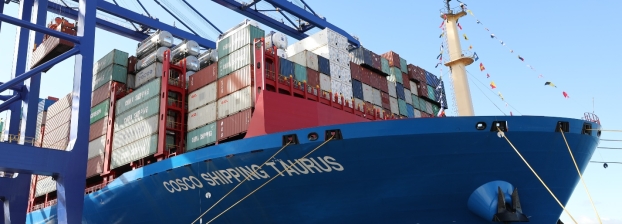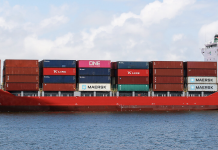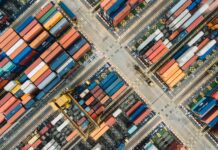
For the first time, the shore power system at HHLA Container Terminal Tollerort (CTT) has been successfully tested in practice. COSCO SHIPPING Taurus received shore power for the first time this week at the Hamburger Hafen und Logistik AG (HHLA) terminal as part of a ship integration test.
COSCO SHIPPING Taurus, like many current COSCO SHIPPING vessels, is outfitted with integrated shore power supply components. The project partners HPA, Siemens, COSCO SHIPPING, and HHLA have now successfully tested the system and process for Hamburg.
“For 40 years, the shipping company COSCO SHIPPING has been linked to the Tollerort terminal through a successful business relationship. With our recent vessels, which are all already equipped with the integrated technical components for shore power supply, and shore power finally becoming available at CTT, COSCO SHIPPING and HHLA are on our way to achieve the goal of carbon neutrality, to fulfill the new requirements of the International Maritime Organization’s MARPOL Convention relating to the “International Shipping Regulations on Carbon Intensity”, reduce greenhouse gas emissions from vessels at berth, build a green and low-carbon supply chain, and protect the earth’s ecological environment”, stated Mingfeng Wang, president COSCO SHIPPING (Europe) GmbH.
The CTT’s shore facility is located near the mega-ship berth, which can accommodate the world’s largest cargo ships. To link the container ship to the shore power infrastructure, special cables are installed at the quay edge.
COSCO SHIPPING Taurus is set up with electrotechnical components and cables to receive power from shore – sustainable sources, of course. Because the grid voltage and frequency on land vary from the onboard voltage and frequency, converters and transformers are used to accommodate the ship’s demands on land.
This confirms that the system and the ship are compatible. As soon as the ship is connected to shore power, the diesel engines can be turned off, which significantly reduces greenhouse gas and pollutant emissions during the berthing period.





